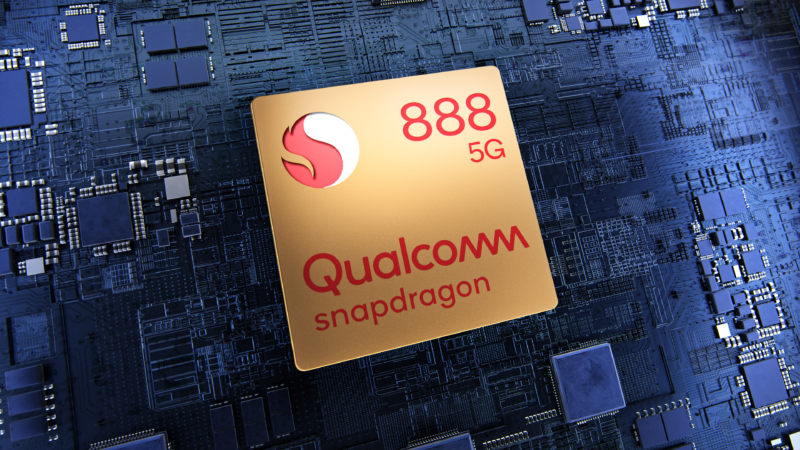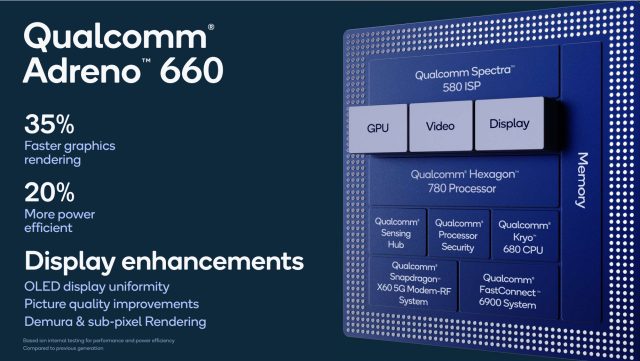loyola llothta
☭☭☭
CES 2020 Next Gen GE Profile Kitchen Hub by Haier with Microwave - Best Smart Home Tech Product

For one, the video revealed that every PS5 is equipped with a Wi-Fi 6 wireless antenna (that also supports Bluetooth 5.1). Wi-Fi 6 is the snappier name for 802.11ax, which is capable of (theoretical) transfer speeds of 9.6Gbit/s
One of Wi-Fi 6’s biggest advantages is that allows the router to manage more wireless devices more efficiently, maintaining faster speeds more consistently across all of them. In other words, the speed isn’t so much Wi-Fi 6’s biggest advantage over Wi-Fi 5, it’s how it allows routers to deal with demanding traffic from your various devices at home. A good way to future-proof the PS5.
The teardown also confirmed the speeds of the PS5’s various USB ports. The USB-C on the front, as well as the two USB-A (blue) ports on the back are all SuperSpeed-rated, capable of speeds up to 10Gbit/s. The only standard speed USB port is the USB-A on the front (black).
By comparison, Xbox Series X/S only has a Wi-Fi 5 chip, which is the older, current-gen model. Likewise, Xbox Series X/S consoles don’t come with USB-C, and their USB-A ports all run at the default 5Gbit/s data rate.
On the subject of ports into which add-ons will need to be plugged, the teardown also gave us a first look at the M.2 bay where users will be able to plug off-the-shelf NVVMe PCIe 4.0 drives to expand the PS5’s storage.
Back in March lead system architect Mark Cerny said that only SSDs Sony has validated and tested can go into that port. The company has yet to share such a list, of course, but we’re getting there.
Another interesting revelation from today’s video is that the PS5 uses liquid metal to cool its chips. Liquid metal sits between the fan/heatsink and the chip itself, which is a big change from the standard thermal paste used in PS4, PS4 Pro and many other devices.
Liquid metal is superior to thermal paste. However, it could kill any chip it touches if it spills out of its chamber, which is why Sony’s engineer stressed that the company has been testing it for years to ensure it stays put.
If you’re still hunting for a PS5 pre-order, our PS5 pre-order guide will help make the process easier. We also have another for Xbox Series X.

The Q900 and Q950 QLED TV series from Samsung uses MediaTek’s custom Wi-Fi 6 connectivity chipset, making it easier to stream 8K content over the internet. If you don’t know already, Wi-Fi 6 (also known as Wi-Fi 802.11ax) is the latest wireless standard featuring maximum data transfer rates of up to 12Gbps. It also consumes less power while performing the same tasks.

We should probably talk about the name first. Qualcomm's normal naming scheme (and the rumor mill) would have made this chip the "Snapdragon 875" after the 865, 855, and 845 from previous years. The switch to Snapdragon 888 is apparently a nod to Chinese culture, which views 8 as a lucky number. Flight numbers out of Chinese airports often have a lot of eights in them, the Beijing Olympics began on 8/8/08 at eight seconds past 8:08pm local time, and now flagship Android phones will somehow be more appealing—I guess—to Chinese consumers, which also happen to make up the biggest smartphone market in the world. Marketing!
As usual, the CPU is sporting a very lucky eight cores with a single "Prime" core for higher performance duties, three medium cores to help out with foreground tasks, and four low-power cores for background processing. This year, the prime core is getting upgraded to ARM's new Cortex-X1 core at 2.84GHz, while the medium cores are getting upgraded to the Cortex A78. The ancient A55 core is still working smaller-core duties.
ARM's Cortex A78 core is the successor to the Cortex A76 that was used in the previous-gen Snapdragon 865, and ARM claims the design—including the drop from 7nm to 5nm—results in 20-percent better "sustained performance" in the same thermal envelope as a 7nm Cortex A76. The A78 was designed with ARM's typical focus on "performance, power, and area (PPA)," meaning it strikes a balance between physical size, power usage, and CPU performance. The new big core this year is the Cortex-X1, which was designed alongside the A78 as a whole new size category for ARM. The X1 is a super-sized A78 that asks, "What if we don't worry about power usage and size and just go all-out for performance?", and the result is a core that ARM says adds "30 percent peak performance" over the A76. The idea is that the A78 is here for sustained performance, while the X1 is here to increase the cap on bursty CPU performance, which is useful for loading apps and webpages.
Qualcomm never goes into much detail about its GPUs, but it does support Variable Rate Shading (VRS) this year, which lets game developers finely control how much detail each part of the display is being rendered in from frame to frame. If a scene is dark or an object is moving very quickly, it probably doesn't need to be rendered at full resolution, allowing clever developers to squeeze more power out of a GPU by turning down only the parts you won't notice. VRS debuted on PCs with Nvidia's Turing GPUs in 2018, and it's supported in Vulkan and Unreal Engine (and DirectX), so there's a chance thatsome mobile games will actually use it.

Qualcomm
The GPU slide.
The block diagram shows that Qualcomm's "FastConnect 6900 System," which is Qualcomm-speak for Wi-Fi and Bluetooth connectivity, is integrated on the 888 SoC. This means phones will be able to support Bluetooth 5.2 and the new Wi-Fi 6E, if the manufacturers put in the extra work and components to take advantage of it. Wi-Fi 6E will eventually be a big deal for people in dense living areas, since it takes all the advantages of Wi-Fi 6 and adds a big chunk of 6GHz spectrum to the standard. Every country's spectrum regulations are different, but in the US, Wi-Fi 6E will have access to three times the total spectrum of current Wi-Fi systems, or six times the useful spectrum if you skip counting the DFS allocated spectrum in the middle of the 5GHz Wi-Fi bands, which most access points ignore by default. This means Wi-Fi 6E clients will work a lot better in crowded areas like apartment buildings, where the huge number of close-together access points and clients can fill the airwaves and slow the network to a crawl. Early adopters will get the new spectrum all to themselves in the early days, and as time goes on, even the Wi-Fi laggards will see less competition for the airwaves as everyone else switches over.
Wi-Fi 6E compatibility was first possible for Qualcomm on the Snapdragon 865 Plus, but (while there have been a few false alarms), we've yet to see "The World's First Wi-Fi 6E Phone" hit the market. Unless someone beats Samsung to the punch, it looks like the Galaxy S21 Ultra (not any of the cheaper variants) will be the first to come with Wi-Fi 6E in early 2021. We've also yet to see a 6E access point, which you'll also need to take advantage of the new spectrum. We have to start somewhere, though, and that "somewhere" will be flagship Android phones.
Fixing 5G, and other questionably useful additions
One big improvement of the Snapdragon 888 is undoing the damage of the Snapdragon 865, which split Qualcomm's SoC into two chips: a main SoC and a separate modem. In order to rush 5G more into the mainstream market, Qualcomm split the modem off into a separate chip, and it brought 4G along for the ride, too. A two-chip solution is generally bigger, hotter, more power-hungry, and more expensive than a one-chip solution. Sure enough, 2020 saw phone prices skyrocket, with bigger bodies and bigger batteries to handle the higher power draw and heat of Qualcomm's multi-chip 5G solution. While it's expected that an early-generation 5G modem would come with size and power tradeoffs, Qualcomm moved 4G to the separate modem, too, bringing the power-usage downsides to 4G and making it so you couldn't just turn off 5G in areas without 5G coverage, which is most areas.
The Snapdragon 888 is a return to sanity, with onboard 4G and 5G connectivity. We're still not quite ready to say "5G is ready for prime time" given the sorry state of 5G networks, but it sounds like the hardware is getting there, at least. The Snapdragon 888 is equipped with the Qualcomm X60 modem, which was announced all the way back in February (for some reason, Qualcomm modems get announced a year ahead of time). The X60 isn't a speed increase over 2020's X55 modem (7.5Gbps down, good luck actually getting that), but it supports all sorts of future-facing network capabilities. There's Dynamic Spectrum Sharing, which lets carriers run a 5G network over the 4G spectrum. 5G Voice-over-NR (VoNR), aka phone calls over 5G, will be great when we eventually kill 4G LTE. The X60 can also connect to sub-6GHz 5G and mmWave 5G simultaneously, and there's even support for multiple 5G SIMs.
Other than that, there are a lot of other questionably useful odds and ends packed into Qualcomm's latest SoC.
First, Qualcomm says the Hexagon 780 co-processor is "completely redesigned" and offers a "three-fold improvement" in performance-per-watt compared to the Snapdragon 865. You'd need an app to use the appropriate AI framework to take advantage of this extra silicon, and most apps don't, but Qualcomm calls out camera apps, voice assistants, and games as possible targets. Qualcomm also says it will make Snapchat faster.
Second, the new ISP supports capturing from three cameras simultaneously. I sort of understood the idea when Qualcomm added two camera streams, so you could record from the front and back camera at the same time, (Nokia obnoxiously called this a "bothie"instead of a selfie) but three? Qualcomm says this would make switching camera lenses faster, but that already happens in a fraction of a second on the Snapdragon 865. Presumably, the Nokia 9 needed an extra chip to capture data from five rear cameras simultaneously, though that technique didn't lead to a great end result. Google's Project Tango needed three cameras for 3D sensing (though today you can do AR with a single camera). Maybe someone will cook up some crazy AI-powered use-case for this.
There's also now a Type-1 hypervisor built into the Snapdragon 888, which Qualcomm pitches as "a new way to secure and isolate data between apps and multiple operating systems on the same device." That sounds very interesting, but I'm not sure what new features it's supposed to bring to consumer devices. This is "the Android chip" (ARM laptops would use the Snapdragon 8cx line), and isolated apps and data are already more conveniently available in Android via the Work profile rather than split across operating systems. You can also already boot multiple installs of Android—provided one is a guest OS—for testing. In the past, Google has explicitly shut down attempts at dual-booting Android with other OSes, so don't let your imagination run too wild. Maybe modders would like it.
Your first shot at owning a Snapdragon 888 will probably be the Samsung Galaxy S21, which is due out in Q1 2021.